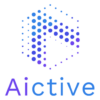Musculoskeletal (MSK) disorders are a leading cause of workplace injuries, costing billions in healthcare expenses and lost productivity. With advancements in artificial intelligence, digital tools now offer innovative ways to assess and treat MSK conditions. But does AI outperform traditional physical therapy (PT), or is there a smarter way forward? The reality is that both have unique benefits, and a hybrid approach provides the best outcomes for patients, employers, and insurers alike.

AI in MSK Care: Precision and Accessibility
AI-driven movement analysis allows for quick, accurate assessments of a person’s posture, range of motion, and movement patterns. These tools use video analysis to detect potential MSK risks and provide personalized exercise recommendations.
Benefits include:
- 24/7 Accessibility – Users can perform self-assessments anytime, reducing wait times.
- Lower Costs – AI tools reduce the need for frequent in-person visits, making MSK care more affordable.
- Personalized Adjustments – Real-time feedback ensures exercises are performed correctly, improving adherence.
- Data-Driven Insights – AI systems collect movement data over time, identifying trends and making long-term treatment plans more effective.
Traditional Physical Therapy: Expertise and Hands-On Care
Despite AI’s advancements, traditional physical therapy remains invaluable. Licensed physical therapists provide:
- Hands-On Techniques – Manual therapy and guided exercises help improve mobility and reduce pain.
- Personalized Treatment Plans – Therapists adapt strategies based on real-time patient feedback, ensuring a human-centered approach.
- Emotional Support – Human interaction plays a key role in motivation and adherence, helping patients stay engaged in their recovery journey.
- Complex Case Management – Some injuries or conditions require direct intervention, which only trained professionals can provide effectively.
The Hybrid Approach: Best of Both Worlds
Rather than choosing between AI and traditional PT, combining both creates the most effective strategy. Here’s why:
- AI for Prevention & Early Detection – Workers can self-assess regularly, identifying risks before they worsen and reducing the likelihood of severe injuries.
- PT for Complex Cases – Therapists step in when manual therapy, strength training, or specialized care is needed for rehabilitation.
- Hybrid Follow-Ups – AI tools track progress remotely, allowing therapists to adjust treatments as necessary and intervene only when needed.
- Scalability & Efficiency – Employers and insurers can use AI tools to monitor large workforces at scale, ensuring that only high-risk cases require in-person therapy.
- Better Long-Term Outcomes – A hybrid approach ensures continuous monitoring, early intervention, and hands-on care when necessary, leading to faster recovery and lower recurrence rates.
Why Employers and Insurers Should Care
Musculoskeletal injuries cost businesses millions annually in lost productivity, healthcare expenses, and compensation claims. A hybrid MSK care model:
- Reduces treatment costs by minimizing the need for frequent in-person therapy while ensuring high-risk cases receive appropriate care.
- Lowers absenteeism by identifying and addressing early signs of MSK issues before they lead to disability leave.
- Improves employee well-being by offering proactive, accessible, and effective MSK care solutions.
- Enhances insurer efficiency by streamlining claim management and reducing long-term disability cases.
Smarter MSK Care Starts with Hybrid Solutions
AI and traditional PT each have strengths, but the best results come from integrating both. By leveraging AI for accessibility, early detection, and data-driven insights while incorporating PT for hands-on care and complex cases, employers and insurers can provide workers with a smarter, more effective MSK prevention and treatment plan. This hybrid approach not only leads to better health outcomes but also delivers significant cost savings and improved productivity in the long run.
